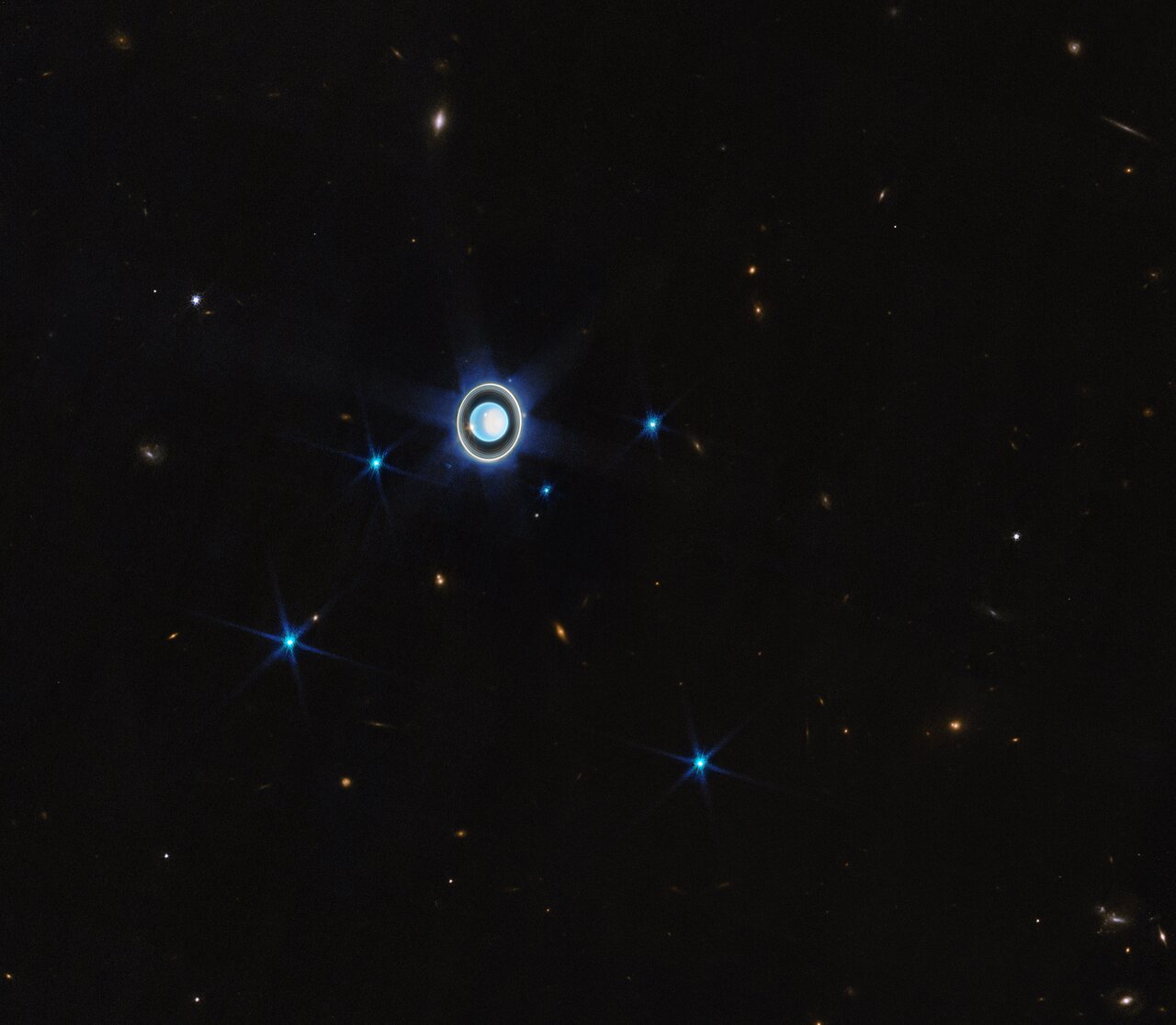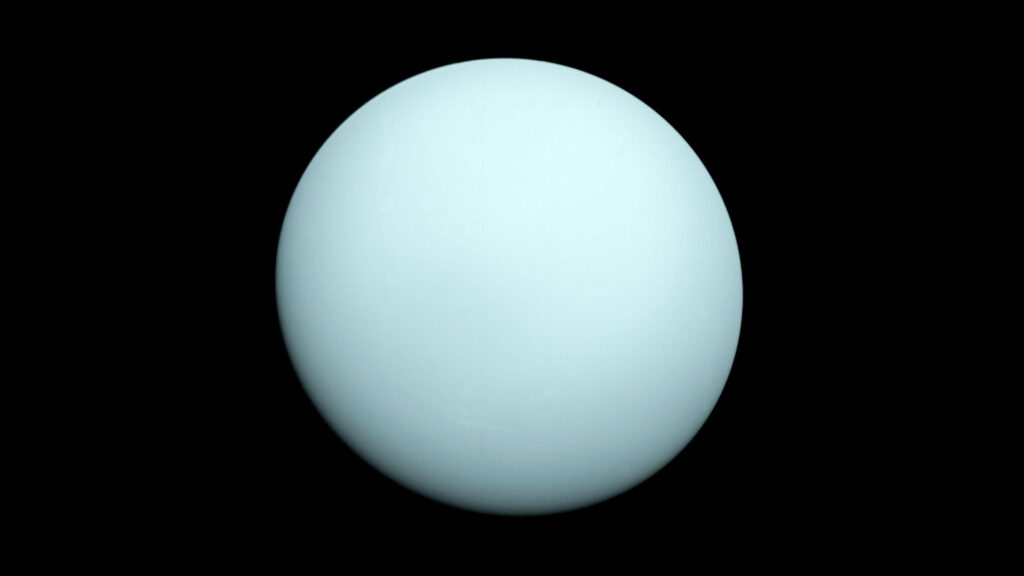Scientists have found that Uranus is emitting its own internal heat — even more than it receives from sunlight — and this discovery contradicts observations of the distant gas giant made by NASA’s Voyager 2 probe nearly four decades ago.
Scientists led by Xinyue Yang of the University of Houston analyzed decades of readings from spacecraft and computer models to find that Uranus emits 12.5% more internal heat than the amount of heat it receives from the sun. However, that amount is still far less than the internal heat of other outer solar system planets like Jupiter, Saturn and Neptune, which emit 100% more heat than they get from the sun.
The researchers behind this new study say Uranus’ internal heat could help reveal the origins of the curious, tilted world. “This means it’s still slowly losing leftover heat from its early history, a key piece of the puzzle that helps us understand its origins and how it has changed over time,” Wang said in a statement.
In 1986, the iconic Voyager 2 probe flew by Uranus while headed out of the solar system and into interstellar space. A good deal of what scientists understand about the seventh planet from the sun comes from that flyby, that found that Uranus does not reveal significant internal heat.
But it turns out that we may have caught Uranus at a weird time, and some of the readings Voyager 2 collected could have been skewed by a surge in solar weather that occurred during its flyby of the planet.
By reviewing a large set of archival data and combining that with computer models, researchers now believe the internal heat emitted by Uranus could imply a completely different internal structure or evolutionary history for the planet we thought we knew. Its believed that Uranus formed around 4.5 billion years ago along with the rest of the solar system, and NASA believes it formed closer to the sun before moving to the outer solar system around 0.5 billion years later. That story, however, is now called into question by these new findings.
“From a scientific perspective, this study helps us better understand Uranus and other giant planets,” Wang said in the statement. The researchers also believe this new understanding of Uranus’ internal processes could help NASA and other agencies plan for missions to the distant planet.
In 2022, the National Academy of Sciences flagged a mission concept known notionally as Uranus Orbiter and Probe (UOP) as one of the highest-priority planetary science missions for the next decade. But even then, before massive budget uncertainty hit NASA and the science community in the wake of President Donald Trump’s overhaul of U.S. government spending, scientists knew such an ambitious and expensive mission would be difficult to put into motion.
“There are many hurdles to come — political, financial, technical — so we’re under no illusion,” Leigh Fletcher, a planetary scientist at the University of Leicester in the U.K. who participated in the decadal survey process, told Space.com in 2022 when the report was published. “We have about a decade to go from a paper mission to hardware in a launch fairing. There’s no time to lose.”

Whether or not new research into Uranus helps boost support for such a mission, scientists are already hailing these new results as groundbreaking on their own. Study co-author Liming Li said the study of Uranus’ internal heat not only helps us understand the distant, icy world better, but could also help inform studies of similar processes here on Earth, including our own changing climate.
“By uncovering how Uranus stores and loses heat, we gain valuable insights into the fundamental processes that shape planetary atmospheres, weather systems and climate systems,” Li said in the statement. “These findings help broaden our perspective on Earth’s atmospheric system and the challenges of climate change.”
A study on Uranus’ internal heat was published in the journal Geophysical Research Letters.
This article was originally published on Space.com.
